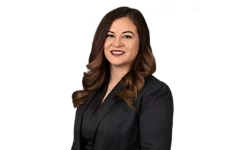2021-22 Rules For K-12 Schools Come Into Focus
The recent adoption of the State’s Budget Act and other legislation, along with new CDPH guidance on masking, provides K-12 school employers (“LEAs”) with a strong initial indication of the rules that will govern K-12 schools in the 2021-22 year, though further guidance is anticipated. As LEAs welcome the return of students in the 2021-22 year, the following provides the most-current state of COVID-19 laws and regulations.
Mask Mandate
On July 12, 2021, the CDPH released its guidance, titled, “COVID-19 Public Health Guidance for K-12 Schools in California, 2021-22 School Year.”
Mask Requirements When Indoors
In a departure from the CDC’s K-12 Schools Guidance, but consistent with CDPH’s prior guidance effective June 15, 2021, CDPH’s July 12 guidance requires all K-12 students to wear masks indoors, regardless of vaccination status and unless exempt. The guidance also requires adults in K-12 school settings, regardless of vaccination status, to wear masks when sharing indoor spaces with students.
Outside the presence of students, unvaccinated adults must still wear masks indoors per the revised Cal/OSHA Emergency Temporary Standards, unless in a private office (as reported in a previous Alert). As a result, only fully vaccinated adults who are not in the presence of students may avoid wearing a mask indoors, subject to compliance with any local rules (see below) or LEA requirements.
For employees, rules applicable to fully vaccinated adults — including those allowing vaccinated adults to avoid wearing a mask when indoors while outside the presence of students — will apply only when the “employer has documented that the person received, at least 14 days prior, … COVID-19 vaccine.” (California Code of Regulations, Title 8, Section 3205(b)(9).) Employers may require proof of vaccinations status, or may allow employees to self-attest to their vaccination status, so long as this is documented in some fashion.
For non-employees who wish to avoid wearing a mask when indoors while not in the presence of students, the CDPH guidance allows the LEA to select amongst the following options:
- a) Provide information about vaccine requirements and allow vaccinated individuals to self-attest that they are fully vaccinated, or meet an approved masking exemption, prior to entry;
- b) Implement vaccine verification; or
- c) Require all patrons to wear masks.
Indoor Sports and Activities
The guidance does not specifically address indoor sports or extra-curricular activities (e.g. band, drama), many of which were allowed to occur, without masks, during portions of the 2020-21 school year. The guidance does state:
Additional information about how this guidance applies to other supervised settings for K-12 school-aged children and youth (including activities such as band, drama) is forthcoming.
In the meantime, it is not entirely clear what rules apply to indoor sports and other activities, including those permitted to occur without masks during the 2020-21 school year. LEAs wishing to conduct those activities now, without requiring masks, are advised to first discuss the matter with legal counsel.
Masking Optional Outdoors
Under the guidance, masks are optional for all outdoor K-12 school settings, including for students and adults, including outdoor sports and other outdoor activities.
Exemptions
Certain individuals may be exempt from the mask mandate, provided they fall into one of the exemptions in the CDPH’s Guidance for the Use of Face Coverings issued effective June 15, 2021. Under the K-12 school guidance, persons exempted from wearing a mask due to a medical condition must wear a non-restrictive alternative, such as a face shield with a drape on the bottom edge, provided the condition permits it. In limited situations where a face covering cannot be used for pedagogical or developmental reasons (e.g., communicating or assisting young children with special needs), a face shield with a drape can be used instead of a face covering while in the classroom, as long as the wearer maintains physical distance from others. Staff must return to wearing a mask outside of the classroom.
Enforcement
The guidance’s language on enforcement has gained the most attention, and will likely pose the greatest challenge to school districts. Shortly after releasing its guidance, CDPH removed language that required schools to exclude students from campus if they are not exempt from wearing a face covering and refuse to wear one. Instead, the revised guidance requires individual school districts to develop and implement their own protocols to enforce mask requirements. This revision to the guidance has caused confusion, as several media outlets incorrectly reported CDPH’s removal of the language meant individual school districts had discretion to decide whether to enforce the indoor mask mandate. However, under the guidance as currently written, the mask mandate remains even though school districts must determine on their own how to enforce it.
With respect to enforcement, the guidance states:
Consistent with guidance from the 2020-21 school year, schools must develop and implement local protocols to enforce the mask requirements. Additionally, schools should offer alternative educational opportunities for students who are excluded from campus because they will not wear a face covering. Note: Public schools should be aware of the requirements in AB 130 to offer independent study programs for the 2021-22 school year.
Thus, unless an exemption applies (as noted above), LEAs must develop and implement protocols to ensure all students and staff wear masks indoors in K-12 school settings. While the guidance no longer explicitly requires students to be excluded from school settings for failing to wear masks, it is clear school districts may not allow unmasked students in indoor school settings unless an exemption applies.
In order to comply with the guidance, LEAs may consider enforcement mechanisms, including student discipline, offering outdoor instruction, and/or offering unmasked students the option to enroll in independent study. We encourage individual school districts to work with legal counsel in developing and implementing protocols that best work for the district, taking into account unique community factors and its instructional program for the upcoming school year.
Adult Education
Masking requirements for Adult Education Programs operated by LEAs may require a fact-based determination. CDPH’s guidance states, “Adults in K-12 school settings are required to mask when sharing indoor spaces with students.” Thus, if indoor adult education courses have K-12 students enrolled or attending the course, all individuals should be masked, irrespective of vaccination status. If K-12 students are not present in the course (indoors), then the more general masking guidance applies.
Local Mask Requirements
As of July 18, Los Angeles County is requiring all persons to wear masks in schools and other indoor public settings, regardless of vaccination status. (http://publichealth.lacounty.gov/acd/docs/COVIDMasks.pdf). LEAs in Los Angeles County — and other counties adopting similar requirements — must comply with this additional requirement, e.g. by requiring all adults (even vaccinated adults) to wear masks when indoors, including at board meetings.
In-Person Instruction and Independent Study
The legal exemptions which permitted remote instruction during the 2020-21 school year have expired, and LEAs must generally provide in-person instruction to receive apportionment funding. Therefore, during the 2021-22 school year, the primary option for students or parents/guardians who prefer remote instruction will be Independent Study, subject to new requirements enacted by the Education Budget Trailer Bill, Assembly Bill 130 (AB 130).
Requirement to Offer Independent Study
For the 2021-22 school year, LEAs are required to offer Independent Study programs. This requirement may be met by entering into an inter-district transfer agreement with another school district or contracting with the county office of education. The requirement to offer Independent Study may be waived by the county office of education or the State Superintendent if it is determined that offering Independent Study would create an unreasonable fiscal burden due to low participation or other extenuating circumstances, and the option to enter into an inter-district transfer agreement is not viable. Absent additional legislation, an LEA’s decision whether to operate an Independent Study program will again be discretionary starting with the 2022-2023 school year, however, for those LEAs that do continue to offer Independent Study in 2022-2023 and beyond, the new requirements of AB 130 with respect to synchronous instruction and live interaction, parent notification, recordkeeping, etc. (discussed below) will continue in effect.
As a condition of claiming apportionment for Independent Study, LEAs are required to adopt and implement board policies and written agreements that meet newly specified criteria. For the 2021-2022 school year only, LEAs may complete the execution of written agreements after students begin in the program, but must have executed written agreements on file within 30 days of the start of instruction.
While Independent Study programming has always required written agreements, AB 130 now includes new elements requiring LEAs to modify these written agreements and Independent Study policies to include, among others, a description of the level of satisfactory education progress and the number of missed assignments that will be allowed before an evaluation is conducted to determine whether independent study is in the best interests of the student, identification of academic and other supports the LEA will offer, and procedures for tiered re-engagement strategies for students who are behind on attendance. Finally, LEA policies and procedures are now required to specify that students in Independent Study who wish to return to traditional school must be able to do so within five instructional days of notifying the LEA. (Some requirements do not apply to students enrolled in Independent Study for fewer than 15 schooldays.) Revised written agreements should be put in place prior to the start of instruction in 2021-2022. These may need to be further reviewed and revised when new audit standards are announced.
LEAs may also see a sustained increase in students enrolling in Independent Study, as Education Code section 51745, now revised, recognizes “individual study for a pupil whose health would be put at risk by in-person instruction as determined by the parent or guardian of the pupil,” as a basis for Independent Study.
Requirements for Implementation of Independent Study Programs
The Independent Study requirements aim to increase the academic rigor of independent programs and courses and to increase accountability and parent involvement. Such provisions include, but are not limited to:
- Live interaction and synchronous instruction. Elements of synchronous instruction and live interaction are required throughout the school year. Specifically, students in TK through grade 3 must be offered opportunities for daily synchronous instruction. Students in grades 4 to 8 must be offered opportunities for both daily live interaction and at least weekly synchronous instruction. Students in grades 9 to 12 must be offered opportunities for at least weekly synchronous instruction.
- Requirement for course offering and content aligned to grade level standards at a level of quality substantially equivalent to in-person instruction. For high schools, this includes access to all courses offered by the LEA for graduation and approved by the University of California or the California State University as creditable under the A–G admissions criteria.
- Optional student-parent-educator conferences before enrollment. Upon the request of a parent or guardian, the LEA must conduct a phone, video conference, or in-person student-parent-educator conference to answer questions about the educational options, curriculum offerings, and nonacademic supports that will be available to student.
- Parent/Guardian notification. For the 2021-22 school year only, the LEA must notify parents and guardians of the option to enroll in in-person instruction or Independent Study. The notice must include specific information from the LEA’s Independent Study policies.
- Documentation, CALPADS reporting, and auditing requirements. Independent Study students’ participation in live interaction and synchronous instruction during each school day must be documented. Beginning with the 2021-22 school year, CALPADS data for students participating in Independent Study will be reported and verification of student/teacher ratio will be included in the annual audit.
CDE has posted to its website a general summary of legal requirements for Independent Study, which LEAs are advised to review.
Updating Safety Plans
The new CDPH guidance calls for LEAs to review and update written safety plans. CDPH’s previous guidance, in effect for 2020-21, required LEAs to have a COVID-19 Safety Plan (“CSP”), consisting of two required components: (1) a COVID-19 Prevention Program (“CPP”) based on Cal/OSHA regulations, and (2) a COVID-19 School Guidance Checklist. For 2021-2022, the requirement to maintain a CPP remains in effect, and LEAs that have not already done so should update their CPPs based on Cal/OSHA’s revised regulations adopted in June, 2021. Additionally, for 2021-22, LEAs receiving ESSER funds are required to adopt a “Safe Return to In-Person Instruction and Continuity of Services Plan” and to review it at least every six months for possible revisions. The 2021-22 CDPH guidance includes a link to a template plan developed by CDE: [www.cde.ca.gov/fg/cr/documents/returnplantemplate.pdf]
Layoff
Effective July 1, 2021, Senate Bill 98’s provisions restricting a District’s ability to layoff certain classified employees, namely nutrition, transportation, or custodial services, has expired. Similar restrictions in place for certificated employees have also expired.
Of considerable interest to LEAs is the progress of Assembly Bill (“AB”) 438, which affects the classified layoff process. Currently, classified employees are generally subject to layoff for a lack of work and/or lack of funds upon sixty days’ notice. This bill would turn that process on its head, instead requiring notices and opportunities for a hearing when a permanent classified employee’s services will not be required for the ensuing year due to lack of work or lack of funds. The bill would, in broad terms, provide permanent classified school employees with the same rights to notice and hearing with respect to layoffs as is provided to certificated employees of school districts, including teachers and administrators, and academic employees of community college districts. Additionally, this bill provides that, should the Legislature vest certificated or academic employees with any additional rights to notice or hearing as to layoffs, the bill would require the respective permanent classified employees, as described, to be afforded the same rights by the school district or community college district, as applicable.
Currently, AB 438 remains in committee, having been referred to a suspense file, where the Legislature sends any bill with an annual cost of more than $150,000. Suspense File bills are then considered at one hearing after the state budget has been prepared and the committee has a better sense of available revenue. As such, it remains to be seen whether AB 438 will become law. Notwithstanding, it is advisable that LEAs considering classified layoffs in the 2021-22 school year consider initiating those layoffs prior to January 1, 2022, the date AB 438 would be expected to take effect if passed during the current legislative term.
Right of High School Students to Change Letter Grades to Pass/No Pass
AB 104, a bill that went into effect on July 1, 2021, includes provisions regarding grade changes, grade level retention, and graduation requirements in an effort to ameliorate the possible negative effects of the pandemic, and pandemic-related distance learning, on students.
AB 104 added Section 49066.5 to the California Education Code, which authorizes parents, guardians, and adult students to request that any high school letter grade earned during the 2020-21 school year be changed to Pass or No Pass (P/NP).
Significantly, AB 104 creates a mandatory written notice and website-posting requirement for LEAs serving high school students in the 2020-21 school year, with stringent timelines.
Education Code section 49066.5 states that within 15 calendar days of the operative date of AB 104 (July 1, 2021), the California Department of Education (“CDE”) must post a template application for LEAs to use for these grade changes. Upon CDE posting this template, any LEA that served high school pupils during the 2020-21 school year must then post a notice on its website, and provide written notice to all parents/guardians of high school pupils, of the ability to change grades as provided in Education Code section 49066.5. LEAs must post and provide this notice within 15 calendar days of CDE posting the application template. The LEA’s notice shall include the application (developed from the CDE template), a list of postsecondary institutions operating in California that will accept P/NP coursework for admissions (CDE is required to post this list on its website within 20 calendar days of July 1, 2021), and a statement that some postsecondary educational institutions, including those in other states, may not accept a P/NP grade instead of a letter grade for admissions purposes.
Subsequently, within 15 calendar days of the LEA’s notice as described above, an adult pupil or parent/guardian desiring such a grade change must submit an application to the LEA. The change from a letter grade to P/NP under Section 49066.5 is mandatory, and not discretionary: An LEA shall change the transcript and notify the adult pupil/parent/guardian within 15 calendar days.
Symptoms Inquiries, Testing, and Contact Tracing
Under the July 12, 2021 CDPH Guidance, schools continue to be required to report COVID-19 cases to their local public health department, as well as assist the local health department with contact tracing and case investigation. (See AB 86 (2021).)
The California Department of Fair Employment and Housing updated its guidance for employers on March 4, 2021 on various COVID-19 related topics. Under the guidance, employers may continue to ask employees about their reasons for a sick leave absence (symptoms inquiries), but the employers must maintain the confidentiality of the medical information disclosed by the employee. When notifying persons potentially exposed to a COVID-19 case, employers must not disclose the name, or any personal health-related information, of the employee with COVID‑19.
Other Provisions of the 2021-22 Budget Act
Additional changes affecting school reopening for the 2021-22 year are also found in the new appropriation bills. The provisions took effect immediately on July 12, 2021. Key provisions include:
- A-G Completion Improvement Grant Program. $547,513,000 was appropriated to establish the A-G Completion Improvement Grant Program seeking to provide additional supports to LEAs to improve admission to the UCs and CSUs. An additional $147,513,000, appropriated as the A-G Learning Loss Mitigation Grants, is to be used to allow students who received a grade of "D," "F," or "Fail" in an A-G course in the spring semester of 2020 or the 2020-21 school year to retake those courses or to offer credit recovery opportunities to all students to ensure students are able to graduate high school on time. The A–G Access Grants and A–G Success Grants shall be used for activities that directly support pupil access to, and successful completion of, the A–G course requirements such as professional development for teachers and administrators and development of advising and tutoring programs.
- Expanded Learning Opportunities Program. $753 million is appropriated for school districts and charter schools under this program, on the condition that they offer to at least all unduplicated pupils in classroom-based instruction in Kindergarten and grades 1-6, and provide to at least 50% of enrolled unduplicated pupils in classroom-based instruction in Kindergarten and grades 1-6, access to afterschool and intersessional expanded learning opportunity programs. In addition to the $753 million appropriation for the 2021-2022 school year through the Education Trailer Bill, approximately $1.02 billion was apportioned in the Budget Act also for these purposes.
- Educator Effectiveness Block Grant. $1,500,000 is appropriated over five years to provide professional learning for teachers, administrators and paraprofessionals in areas such as teacher retention and supporting learning communities for educators to engage in a meaningful classroom teaching experience; improving instruction in literacy and effective language acquisition for English learners; practices and strategies that reengage pupils and lead to accelerated learning and strategies to implement social-emotional learning and creation of a positive school climate.
- Professional Education for Educators. An additional $50 million is appropriated to provide professional education for educators to implement evidence-based intensive interventions to promote learning acceleration and address academic needs that have resulted from the COVID-19 pandemic.
- Supplemental Template to the LCAP for 2021-22. LEAs should be mindful that the State Board of Education will adopt a one-time supplemental template for the 2021-22 LCAP by November 30, 2021.
- LEAs are required to administer, in person, subject to public health guidelines, an assessment in English/Language Arts and mathematics to all pupils who were in grades 3 to 8, inclusive, and grade 11 in the 2020–21 school year. LEAs may also administer the California Science Test.
- 2021 California School Dashboard. The CDE’s publication of the December 2021 California School Dashboard is suspended. LEAs identified for technical assistance under the 2019 Dashboard must retain that identification until the release of the 2022 Dashboard.
If you have questions regarding this alert, please contact the authors or your regular attorney at Atkinson, Andelson, Loya, Ruud & Romo.
This AALRR publication is intended for informational purposes only and should not be relied upon in reaching a conclusion in a particular area of law. Applicability of the legal principles discussed may differ substantially in individual situations. Receipt of this or any other AALRR publication does not create an attorney-client relationship. The Firm is not responsible for inadvertent errors that may occur in the publishing process.
© 2021 Atkinson, Andelson, Loya, Ruud & Romo
Attorneys
 Partner562-653-3200
Partner562-653-3200 Partner858-485-9526
Partner858-485-9526 Partner626-583-8600
Partner626-583-8600 Partner951-683-1122
Partner951-683-1122 Partner562-653-3200
Partner562-653-3200 Senior Counsel949-453-4260
Senior Counsel949-453-4260 Partner562-653-3200
Partner562-653-3200 Partner562-653-3200
Partner562-653-3200 Senior Associate562-653-3200
Senior Associate562-653-3200
